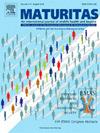基于运动传感器的人类活动识别在智能家居中支持独立性的可行性
IF 3.6
2区 医学
Q2 GERIATRICS & GERONTOLOGY
引用次数: 0
摘要
目的本研究探讨利用物联网(IoT)和人工智能(AI)技术准确识别对评估老年人独立生活能力至关重要的关键人类活动的可行性。方法采用标准临床工具和与老年护理临床医生深入讨论的见解,确定了17项评估老年人独立生活的临床相关活动。然后使用20个物联网可穿戴和物体传感器在家庭环境中收集真实世界的数据,同时健康的成年参与者进行每项活动。从收集的数据中提取出一组综合的特征,使用时域和频域,然后用于开发随机森林机器学习算法来准确识别这些活动。结果10名参与者(男性7人,女性3人)的数据表明,该算法对17个关键活动的识别平均准确率为87.5%。此外,该算法在识别流动性、卫生、营养和水合作用以及药物摄入四个功能领域的准确率达到97.95%。这些发现强调了物联网和人工智能驱动技术在确定家庭环境中独立生活所必需的关键活动方面的潜力。活动识别的高精度实现了可靠的监测,为老年人独立生活的能力提供了有价值的见解。这种方法可用于使护理人员和临床医生能够及时提供量身定制的护理,促进改善的支持和生活质量。本文章由计算机程序翻译,如有差异,请以英文原文为准。
Feasibility of motion sensor-based human activity recognition for supporting independence in smart homes
Objectives
This study investigates the feasibility of leveraging Internet of Things (IoT) and artificial intelligence (AI) technologies to accurately identify key human activities critical for evaluating the ability of older adults to live independently.
Methods
Seventeen clinically relevant activities for assessing independent living of older adults were identified using standard clinical tools and insights from in-depth discussions with clinicians in geriatric care. Real-world data were then collected within a home environment using 20 IoT wearable and object sensors, as healthy adult participants performed each activity. A comprehensive set of features was extracted from the collected data, using both time and frequency domains, which were then used to develop a random forest machine learning algorithm to accurately recognize these activities.
Results
Data from 10 participants (7 male, 3 female) showed that the proposed algorithm achieved an average accuracy of 87.5 % in recognizing 17 key activities. Additionally, the algorithm achieved 97.95 % accuracy in identifying four functional areas namely mobility, hygiene, nutrition and hydration, and medication intake.
Discussion
These findings highlight the potential of IoT and AI-driven technologies to identify key activities essential for independent living in a home environment. The high accuracy of activity recognition enables reliable monitoring, offering valuable insights into the capabilities of older adults to live independently. This approach could be used to empower caregivers and clinicians to deliver timely, tailored care, fostering improved support and quality of life.
求助全文
通过发布文献求助,成功后即可免费获取论文全文。
去求助
来源期刊

Maturitas
医学-妇产科学
CiteScore
9.10
自引率
2.00%
发文量
142
审稿时长
40 days
期刊介绍:
Maturitas is an international multidisciplinary peer reviewed scientific journal of midlife health and beyond publishing original research, reviews, consensus statements and guidelines, and mini-reviews. The journal provides a forum for all aspects of postreproductive health in both genders ranging from basic science to health and social care.
Topic areas include:• Aging• Alternative and Complementary medicines• Arthritis and Bone Health• Cancer• Cardiovascular Health• Cognitive and Physical Functioning• Epidemiology, health and social care• Gynecology/ Reproductive Endocrinology• Nutrition/ Obesity Diabetes/ Metabolic Syndrome• Menopause, Ovarian Aging• Mental Health• Pharmacology• Sexuality• Quality of Life
 求助内容:
求助内容: 应助结果提醒方式:
应助结果提醒方式:


